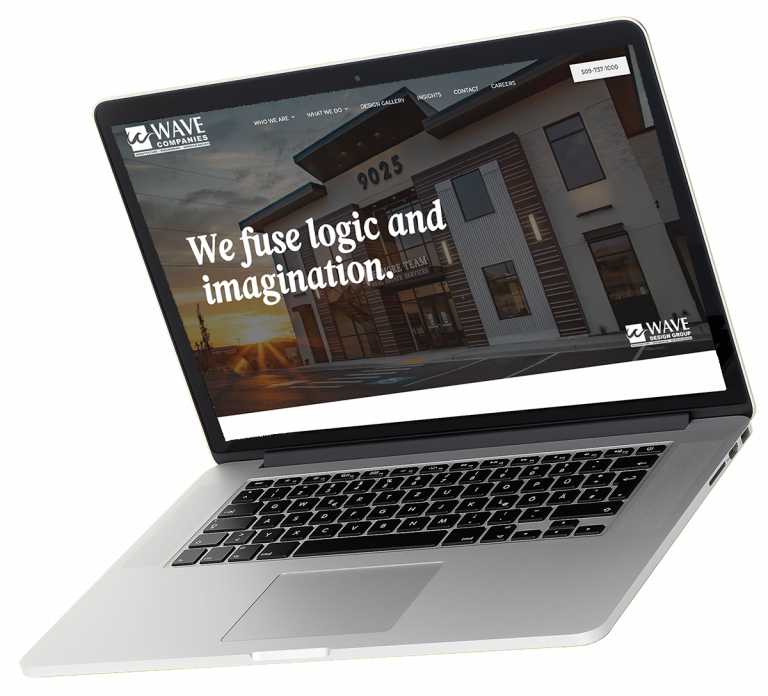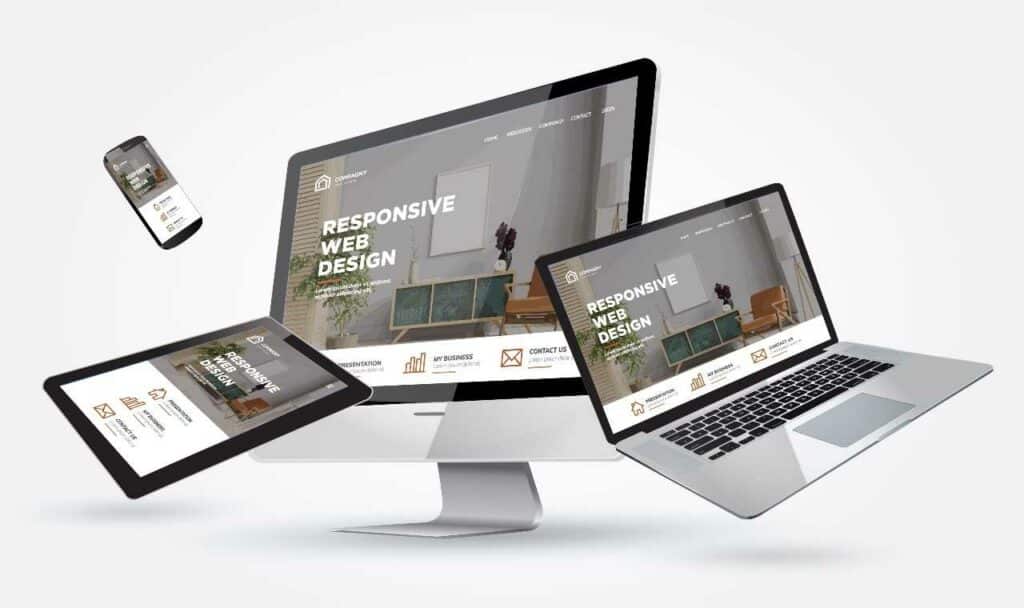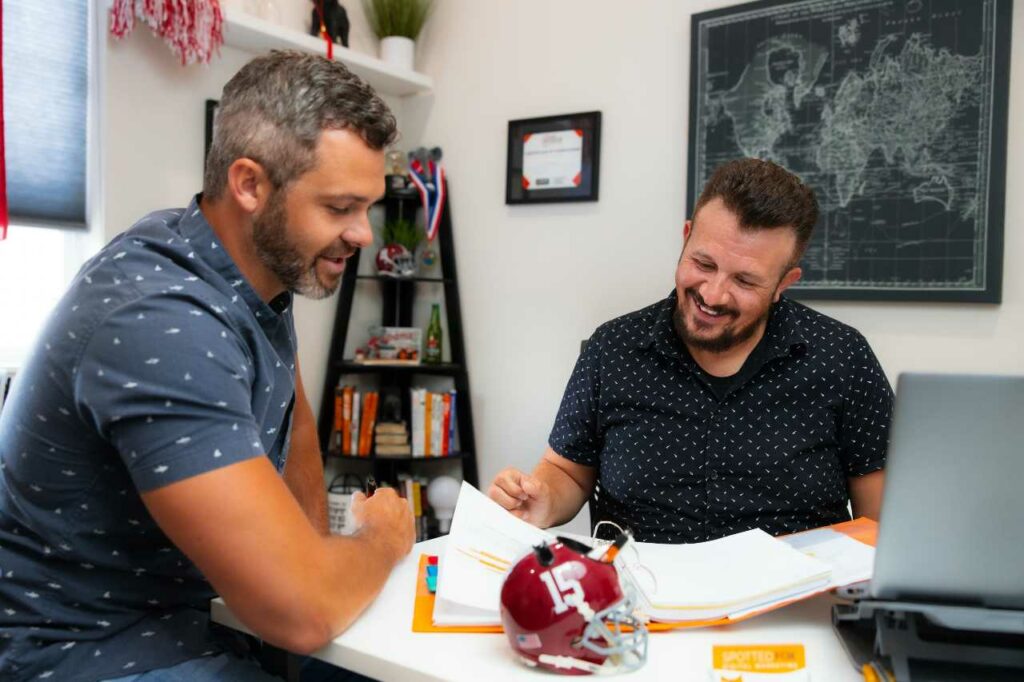In the digital age, a website is more than just an online presence; it’s the digital storefront of your brand. As businesses continue to transition to the online realm, the importance of a well-designed website cannot be overstated. A compelling website amplifies your brand’s voice, showcases its values, and serves as a beacon to attract potential customers. Conversely, a poorly designed website can deter visitors, creating missed opportunities and diminishing brand credibility. Choosing the right web design agency is paramount to ensure your website design captivates and effectively communicates your brand’s ethos and offerings. Today, we’ll delve into the intricacies of making an informed decision when hiring a web design agency, ensuring your website stands as a testament to your brand’s excellence in the vast digital marketplace.
Understanding the Distinction Between Design Aesthetics and Functionality
When it comes to website creation, there’s a delicate balance between design aesthetics and functionality. Both elements are pivotal, and one should not overshadow the other. A visually stunning website can captivate visitors, but they’ll likely leave frustrated if they struggle to navigate it or find essential information.
Prior to jumping into the design process, it is vital to consider the various features you envision for your website. You may be looking to integrate an e-commerce store, a regularly updated blog, or a portfolio showcase. Each of these elements requires a blend of aesthetic appeal and seamless functionality. An e-commerce store, for instance, should display products attractively and offer an intuitive shopping experience, from product selection to secure checkout.

In essence, when choosing a web design agency, seek one that understands the symbiotic relationship between design and functionality. Your website should be a harmonious blend of beauty and utility, ensuring visitors stay, engage, and convert.
Pro Tip: Budget considerations are, of course, vital. However, it’s essential to look beyond mere dollar signs. Investing in a website is about recognizing its potential value. A well-designed and functional website can be a powerful lead-generation tool, converting casual visitors into loyal customers. It’s not just about what you spend upfront but the potential ROI regarding leads, sales, and brand credibility.
The Role of UX and UI in Website Design
Diving deeper into the intricacies of website design, two terms often come to the forefront: User Experience (UX) and User Interface (UI). While they might sound fancy and technical, they are quite easy to implement and profoundly impactful for any business aiming to establish a robust online presence. Let us briefly explain each and a few solid habits to utilize – and some to toss in the trash!
UX stands for “User Experience.” The User Experience focuses on a user’s overall feel and experience when navigating through a website. It’s about the journey: how easy it is for a visitor to complete a desired action, whether that’s making a purchase, signing up for a newsletter, or simply finding contact information. Good UX design ensures visitors can navigate seamlessly, leading to higher conversion rates. It encompasses factors like website speed, ease of navigation, and the logical flow of content.
UI, on the other hand, stands for “User Interface.” User Interface deals with the visual elements of a website. It’s about aesthetics: the color schemes, button designs, graphics, typography, and other visual cues that guide users through a site. A well-designed UI ensures that the website is visually appealing and intuitive, making interactions straightforward and pleasant.
Good UX and UI Design Habits:
- Consistent branding elements throughout the site.
- Clear and logical navigation menus.
- Fast-loading pages to reduce bounce rates.
- Intuitive layouts that guide the user’s journey.
- Accessible design for users with disabilities.
Bad UX and UI Design Habits:
- Cluttered layouts that confuse visitors.
- Inconsistent fonts and colors that disrupt visual flow.
- Non-responsive designs that don’t adapt to different devices.
- Hidden navigation or essential features.
- Overloading pages with too many elements or excessive information.
Just like in any business, first impressions matter immensely. A visitor will decide whether to stay on a site or leave within seconds. If there are any roadblocks whatsoever, they will back out and check out a competing site instead. By ensuring that both UX and UI are prioritized in your website design, you not only retain visitors but also guide them toward meaningful interactions, be it making a purchase, engaging with content, or reaching out for more information. When selecting a web design agency, choosing one that understands and values the symbiotic relationship between UX and UI is crucial.
Importance of a Responsive and Mobile-friendly Design

Traditionally, customers used to look at websites on their home computers or maybe even laptops. In today’s fast-paced digital world, accessibility is vital. With a significant portion of internet users accessing websites via mobile devices, having a mobile-friendly design isn’t just a luxury anymore—it’s a necessity. A responsive website design ensures that your site looks and functions optimally across various devices, from desktops to smartphones.
The surge in mobile browsing isn’t just a fleeting trend; it’s the new norm. Many users solely use their mobile devices for internet browsing these days, especially if they are not online workers. Due to this, users expect a seamless experience, whether scrolling through a blog post on their phone during a commute or browsing an e-commerce store on a tablet. A website that doesn’t adapt to various screen sizes can lead to frustrated users, potentially causing them to abandon the site and seek alternatives.
Moreover, a mobile-friendly design isn’t just about user experience—it’s also crucial for search engine optimization (SEO). Search engines like Google prioritize mobile-optimized websites in their rankings. If you want your website to be found and ranked favorably, it needs to cater to the mobile audience.
In essence, a responsive and mobile-friendly design ensures that your website is accessible, user-friendly, and primed for optimal search engine performance. As you consider partnering with a web design agency, prioritize those that emphasize the importance of mobile optimization in their website design approach.
Evaluating Your Potential Web Design Agency: 4 Key Considerations
In the journey of selecting the perfect web design agency for your brand, it’s essential to delve deeper than surface-level promises. A comprehensive evaluation involves understanding an agency’s past work, its communication ethos, post-launch support, and the real-world feedback it’s garnered. This holistic approach ensures that you’re not just choosing a service provider but a partner who will be instrumental in bringing your digital vision to life. Next, we’ll guide you through these critical considerations to ensure your chosen agency aligns perfectly with your brand’s aspirations and needs.
#1: Checking the Agency’s Portfolio and Past Projects
Quality of Work: The finished websites in a portfolio showcase the agency’s capability to deliver polished, functional, and aesthetically pleasing results. It directly reflects their commitment to quality and attention to detail.
Diversity of Projects: A varied portfolio indicates the agency’s flexibility in catering to different industries and its ability to tailor their designs to suit specific business needs and target demographics.
Innovation and Creativity: The digital landscape is ever-evolving, and an agency’s portfolio can reveal its adaptability to new trends and its knack for innovative solutions.
Alignment with Your Vision: While every project is unique, reviewing past works can help you determine if the agency’s style resonates with your brand’s vision and objectives.
Technical Proficiency: Beyond the visual appeal, delve into the functionality of the sites. Are they mobile-responsive? Do they load quickly? Are there interactive elements, and do they work seamlessly?
For a firsthand experience of what an agency can deliver, you can visit Spotted Fox’s Portfolio Page. It provides a comprehensive view of our expertise, creativity, and commitment to excellence in Website Design.

#2: Evaluating the Agency’s Communication Style and Responsiveness
In the realm of business web design, open and effective communication is paramount. Bringing a website to life is collaborative, requiring constant dialogue between the client and the agency. Thus, gauging an agency’s communication style and responsiveness is crucial in the selection process.
Open Dialogue: A reputable web design agency will prioritize understanding your brand, its objectives, and your specific requirements. They should be open to feedback, suggestions, and any concerns you might have, ensuring the final product aligns with your vision.
Timely Responses: In the digital age, time is of the essence. Whether it’s a query, concern, or feedback, the agency should respond promptly. Delays can not only hinder the project timeline but can also indicate their overall approach to client relations.
Clear and Transparent Communication: The technical aspects of web design can sometimes be complex. A good agency will break down these complexities, ensuring you’re always in the loop and understand the decisions being made.
Feedback Mechanisms: Regular check-ins, updates, and review sessions should be a part of the agency’s communication strategy. This ensures the project stays on track and any potential issues are promptly addressed.
At Spotted Fox Digital Marketing, we pride ourselves on our commitment to transparent, open, and timely communication. We understand the value of collaboration and ensure our clients are always informed, involved, and confident in the direction the project is taking.
#3: Importance of Post-launch Support and Maintenance
Once a website is live, the journey doesn’t end there. In fact, the post-launch phase is equally, if not more, critical. You won’t truly know how well a website runs until it is live. Due to this, websites, much like any other digital asset, require post-launch support and maintenance, including:
Ongoing Support: Even the most meticulously designed websites can encounter issues. Whether it’s a minor glitch, a broken link, or a more significant technical hiccup, having an agency that offers prompt post-launch support ensures that problems are addressed swiftly, minimizing disruptions.
Regular Updates: The digital landscape is ever-evolving. New browser versions, software updates, and changing user behaviors mean that websites need regular tweaks to stay current and functional. An agency that provides ongoing maintenance ensures your site remains compatible and up to date.
Cyber Security: With the increasing cyber-attack threats, website security is paramount. Regular maintenance includes security checks, updates, and ensuring your site and user data remain protected.
Performance Monitoring: Post-launch, it’s essential to monitor how the website performs in real-world scenarios. This includes load times, user interactions, and conversion rates. Regular maintenance can address performance issues, optimizing the site for the best user experience.
At Spotted Fox Digital Marketing, we understand that a website is a dynamic entity. Our commitment extends beyond the design and launch phases. We offer comprehensive post-launch support, ensuring our clients’ websites remain secure, functional, and primed to deliver the best user experience.
#4: The Value of Client Testimonials and Reviews
In the digital age, where information is abundant, third-party opinions can be a goldmine of insights. Client testimonials and reviews offer an unfiltered perspective on an agency’s capabilities, professionalism, and the results they deliver. They provide potential clients with a glimpse into the experiences of those who have walked the path before them.
Such testimonials underscore the real-world impact of an agency’s services. They highlight not just the end product but also the journey – the collaboration, communication, and commitment that defines the agency-client relationship.
When evaluating a web design agency, seeking out these testimonials or reviews is essential. They offer a more comprehensive picture, complementing the agency’s portfolio and allowing potential clients to gauge the consistency and quality of the agency’s work.
At Spotted Fox Digital Marketing, we cherish the feedback we receive from our clients. It drives us to continually elevate our standards and reinforces our commitment to delivering unparalleled digital solutions.
“Working with Brad, Nathan, and Evan has been awesome. They are a dream team. If you’re thinking about social media management, website building, SEO, or professional video/photography, go with Spotted Fox Digital!” – RoofMaxx in Kennewick
Pro Tip: Don’t just look at the testimonials on a web design agency’s website! Look at third-party review sites where they do not have control of the content, such as Google, Yelp, Facebook, or other such places.
Making the Final Decision – The Steps to Getting it Done
Choosing the right web design agency is a significant decision that can influence your brand’s digital footprint for years to come. It’s essential to approach this choice with a comprehensive perspective, weighing the pros and cons of each potential agency. Here’s a step-by-step guide to help you evaluate your options and make an informed decision:
Step 1: Define your needs and budgets. That includes what you want your website to do, what you want it to achieve, how you want it to look, and what you can budget for it.
Step 2: Make a list of potential agencies. Do a deep dive into researching various web design agencies. Compare and contract their services, portfolio, testimonials, and pricing carefully. Remember – the cheapest and most expensive options are rarely the best!
Step 3: Book a consultation. Take the time to speak directly with the agency to not only get a better understanding of their procedures and communication strategies but also to allow them to learn about you and your business so they can offer a customized plan of action tailored to your business.

Step 4: Make a decision. Once you have all the details strategically examined, consider those and your gut instincts to pick an agency you want to collaborate with for years to come.
Chat with Us at Spotted Fox about Your Web Design Journey
Choosing the right web design agency is pivotal in your brand’s digital journey. A well-designed website not only amplifies your brand’s voice but also drives engagement, conversions, and business growth. Spotted Fox Digital Marketing blends creativity with functionality, ensuring your website stands out in the digital landscape.
Looking for a trusted web design agency with a track record of excellence? Dive into a partnership with us. Let’s collaborate and bring your vision to life. Your brand deserves the best, and we’re here to deliver. Reach out to Spotted Fox Digital Marketing today and see the difference expert design and dedication can make!
